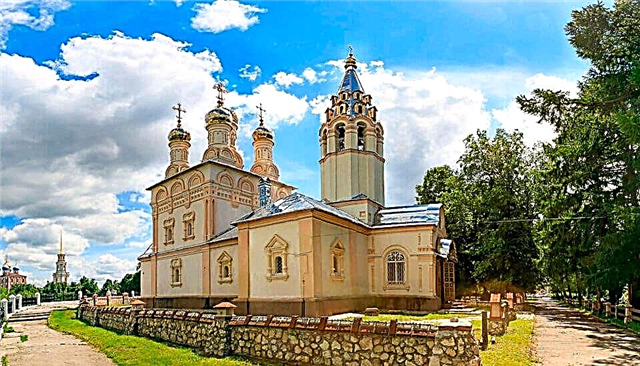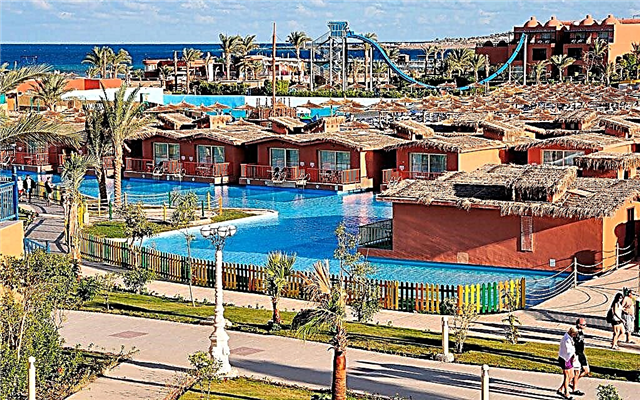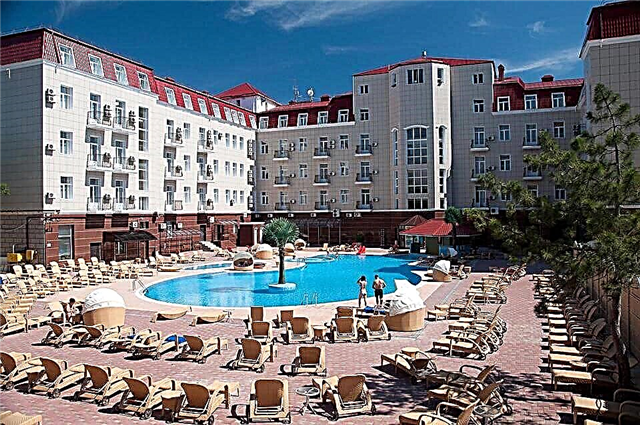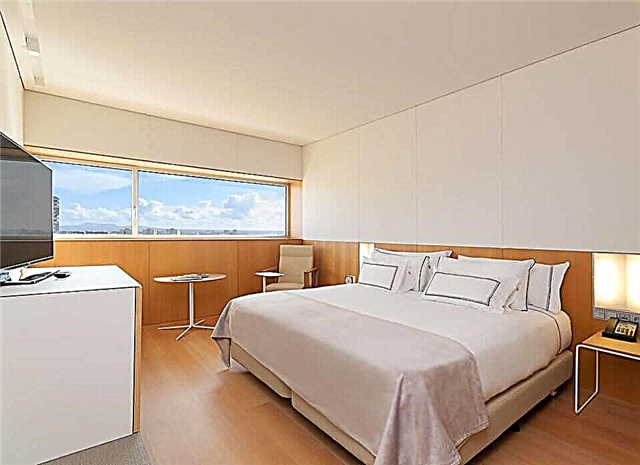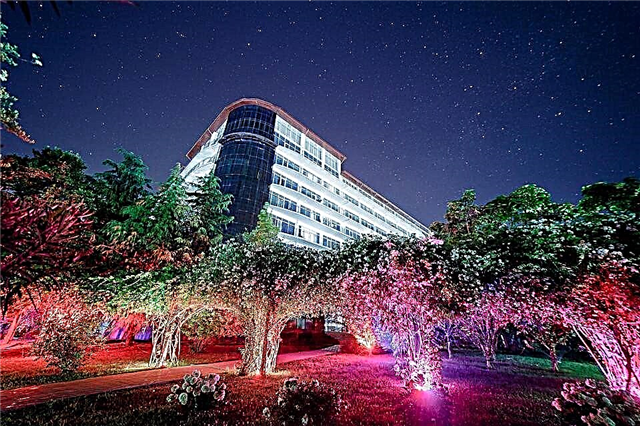Address: Moscow, st. Petrovka, 25
Foundation date: 1999 year
Founder: Zurab Konstantinovich Tsereteli
Coordinates: 55 ° 46'01.1 "N 37 ° 36'51.2" E
Content:
Among the most famous museums in Moscow, there is one that owns five buildings in the city center at once. The main building of the Museum of Modern Art is located in the luxurious house of the merchant Mikhail Gubin, where one of the Moscow gymnasiums worked more than a hundred years ago. Today this Moscow museum is very popular not only in our country, but also abroad.

Facade of the building of the Museum of Modern Art at Petrovka, 25
From idea to museum
In the nineties of the last century, famous artists and art critics of our country proposed to create a new museum in the capital, where works of artists of the 20th century could be exhibited. In 1995, Zurab Tsereteli bought out the old house on Petrovka, and four years later the first museum expositions were opened there. From the very beginning ZK Tsereteli himself has occupied the post of director.
Over time, several more buildings were transferred to the museum, and it turned into an exhibition complex that annually serves more than 70 thousand people and attracts connoisseurs of beauty from around the world. The museum staff organizes exhibitions of famous and emerging artists, retrospectives, international festivals, conferences and carries out a large scientific work.

A large library is organized at the museum, where the best books on art of the 20th century are collected. There is also a research laboratory here.
Mansion
The building next to the old Vysoko-Petrovsky monastery was erected in the best traditions of Russian classicism by the project of the famous Russian master of architecture Matvey Kazakov at the end of the 18th century. Then there was a manor house owned by a wealthy industrialist and mayor of Moscow - Mikhail Pavlovich Gubin.

In the 1880s, the mansion was given to an educational institution. It is noteworthy that the students of the gymnasium were the future entrepreneurs and benefactors of the Bakhrushins and the famous Russian poet Vasily Bryusov. Since the 1920s, the mansion has housed a scientific and medical institution dealing with the problems of physiotherapy and the development of orthopedics.
A representative building, well restored. Its facades are decorated with slender columns with Corinthian porticoes, and expressive bas-reliefs can be seen above the windows. Elements of the old decoration - columns and stucco moldings have been preserved inside the mansion as well.

Tsereteli's works
A significant part of the collections are the works of Zurab Konstantinovich himself. More than two thousand works are exhibited in the halls - originals and copies from ready-made monuments. The master's efficiency amazes everyone. He manages to combine administrative activities at the Academy of Arts with teaching, and also creates original sculptures, paintings and design projects.
The main collections of the museum
In addition to the works of the founder of the museum, the halls display over 12 thousand works by artists of the late XX - XXI centuries. These are paintings, drawings, sculptures, installations and photographs from the beginning of the development of Russian modernism to the present day.

Among the works of avant-garde artists there are several paintings by world-renowned masters of the brush Kazimir Malevich, Marc Chagall, Wassily Kandinsky and Natalia Goncharova. In the halls you can see the works of artists who created at the junction of certain genres. For example, the sculptures created by Alexander Archipenko and Osip Zadkin.
True lovers of painting specially come to the museum to admire the paintings of the remarkable artist Niko Pirosmani. A talented original primitivist painter lived in complete poverty and painted his works on oilcloth with homemade paints. Nowadays, the expressive portraits, landscapes and genre scenes created by Pirosmani are extremely appreciated all over the world.

In the 1960s-1980s, a movement of non-conformist artists developed on the territory of the USSR. Then their works and installations were banned, and today they are available to any visitor. The halls display works by Ilya Kabakov, Anatoly Zverev and Vladimir Yakovlev. Thanks to their simple and at the same time refined language, they leave a very strong impression.
The museum funds contain individual works of artists of the 1920s, socialist realists and Soviet impressionists. A separate section is devoted to the works of painters who created their works in the middle of the last century. They are usually referred to as masters of "quiet art". The modern collection of artists grows from year to year, so visitors can see the works of Boris Orlov, Dmitry Prigov and Francisco Infante.

Many tourists come to the museum specially to visit a room with a soft floor. To see the unusual exhibits on display, they need to be illuminated with a mobile phone or flashlight. Visitors are delighted with a small hall with installations made of large glass jars and other provocative performances in different parts of the building.
Museum courtyard
Art lovers are surprised not only by the museum halls. A significant part of the exposition is located right in the courtyard of the mansion on Petrovka. Most of them are bronze sculptures created by Tsereteli himself. A walk in the open air between the courtyard of the museum resembles a journey in the Muzeon, popular with Muscovites and tourists.

The inhabitants of the "Georgian town" look very colorful: the beloved movie heroes of the Soviet film "Mimino" and the main characters of funny short films about Georgians. Kind smiles are evoked by the figures of a Georgian grinder, a janitor and an old man pouring wine into a horn.
The metal heroes of Cervantes' immortal novel - Don Quixote, his horse Rosinante and the faithful squire Sancho Panza - are made in a bright steampunk style. Not far from them there is a figure of Vladimir Vysotsky and a large shiny disc, divided into several parts, which the museum calls "Photo of Moscow". The open-air glass pavilion contains a fragment of the original spiral staircase from the Parisian Eiffel Tower.

Museum programs
Museum staff invite everyone to the Free Workshops School of Contemporary Art. For two years, students attend lectures and hone their practical skills in the workshops. The school graduates brush masters and art critics.
The "Fantasy" art studio is open for children from preschool and school age. Those who want to learn more about the problems of contemporary culture go to the museum's lecture hall. In addition, meetings with professional painters and master classes are held all year round in different buildings of the museum. Since 2011, a volunteer movement has been organized at the museum. It helps everyone who is not afraid of free work to join the art.

In the courtyard of the Museum of Modern Art
Publishing activities
Since its opening, the museum has published more than two hundred books on the history and trends of contemporary art. These are catalogs of temporary exhibitions, individual books about the museum's collections, as well as monographs by famous artists.
For more than 15 years the museum has been publishing an interesting educational magazine "DI", the name of which stands for "Dialogue of Arts". He talks about current issues and leaders of the world art. In the periodical you can read essays, notes, reports from exhibitions and other materials of interest to admirers of painting, graphics and sculpture. The main building houses a bookstore selling books and colorful magazines in different languages.

Monument to Vladimir Vysotsky, in the courtyard of the museum, author - Zurab Tsereteli
Useful information for tourists
The museum accepts guests any day from 12:00 to 20:00, and on Thursday from 13:00 to 21:00. Ticket offices stop selling tickets 45 minutes before closing. You can walk through the halls on your own or as part of an excursion group.
The ticket costs 350 rubles. Beneficiaries pay 150 rubles (2018). Children under 7 years old are admitted here free of charge. No money is charged for visiting the sculpture exhibition. In addition, if you come to the museum on the third Sunday of the month, you can use the right of free admission to all exhibitions. It should be borne in mind that it is allowed to take pictures and video in the halls, but museum keepers are asked not to use flash.

Don Quixote, his horse Rosinante and squire Sancho Panza
How to get there
The museum ticket offices are located at 25 Petrovka Street. Branches are located at 9 Tverskoy Boulevard, 15 Bolshaya Gruzinskaya Boulevard, at 16 Ermolaevsky Lane and at 10 Gogolevsky Boulevard.
It is convenient to get to the main building by metro. You need to get to the station "Chekhovskaya" or "Pushkinskaya" and 5-7 minutes walk along Tverskoy Boulevard and Petrovka street.

